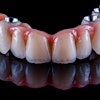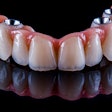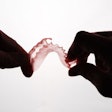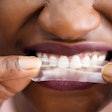Artificial intelligence (AI) is all the buzz in dentistry right now. With that in mind, I recently asked ChatGPT to list the five biggest mistakes that dentists and dental teams make when it comes to smile design. It not only provided five answers, but it listed suggestions on how to fix those mistakes as well.
After reading the mistakes and suggestions below, let us know what you think about what was right and wrong by leaving a comment below.
Ignoring the patient’s personality, lifestyle, and expectations
The mistake: Designing a “textbook-perfect” smile without considering what the patient wants.
Why it matters: A glamorous Hollywood smile may not fit a quiet professional or vice versa. Patients might want subtle changes, not a dramatic overhaul.
What to do instead:
- Use smile questionnaires and digital previews to align expectations.
- Discuss shade, shape, and symmetry with the patient using reference photos.
- Ask “Do you want your smile to look natural, youthful, bold, or conservative?”
Overlooking the role of facial proportions and lip dynamics
The mistake: Focusing only on teeth without considering how they fit within the face, lips, and smile line.
Why it matters: A beautiful set of veneers can still look “off” if they don’t harmonize with facial features or smile movement.
What to do instead:
- Evaluate facial symmetry, lip mobility, and smile at rest versus a full smile.
- Consider the patient’s midline, buccal corridors, and incisal edge display.
- Use facially driven smile design principles, not just intraoral ones.
Relying too heavily on technology without artistic judgment
The mistake: Letting digital tools make all the decisions.
Why it matters: While digital smile design is powerful, it can't replace clinical intuition and an artistic eye.
What to do instead:
- Use technology as a guide, not the final word.
- Trust your aesthetic sensibilities and double-check the mock-up with wax-ups and test drives.
- Involve the lab early -- technician input is gold.
Failing to test-drive the smile (no temporaries or mock-ups)
The mistake: Going straight to finals without letting the patient try a version of their new smile.
Why it matters: Patients often don’t realize what a big change a new smile can be -- buyer’s remorse is real.
What to do instead:
- Always provide a mock-up or temporaries to preview the shape, length, and shade.
- Use photography or digital simulations to show the “before and after.”
- Encourage feedback during the try-in phase so the patient feels involved and confident.
Compromising function for aesthetics
The mistake: Creating a smile that looks great but doesn’t function well, leading to chips, bite issues, or a temporomandibular disorder.
Why it matters: A smile that can’t withstand everyday function will eventually fail, no matter how beautiful it is.
What to do instead:
- Evaluate occlusion, parafunction (grinding/clenching), and vertical dimension.
- Design within the patient’s functional envelope.
- Always ask: “Will this smile look great and last?”
Final takeaway
Smile design isn't about creating the "perfect smile" -- it's about creating the perfect smile for that patient. When dentists combine clinical expertise, artistry, patient communication, and functional awareness, that’s when magic happens.
So what do you think? Let us know in the comments below.



















